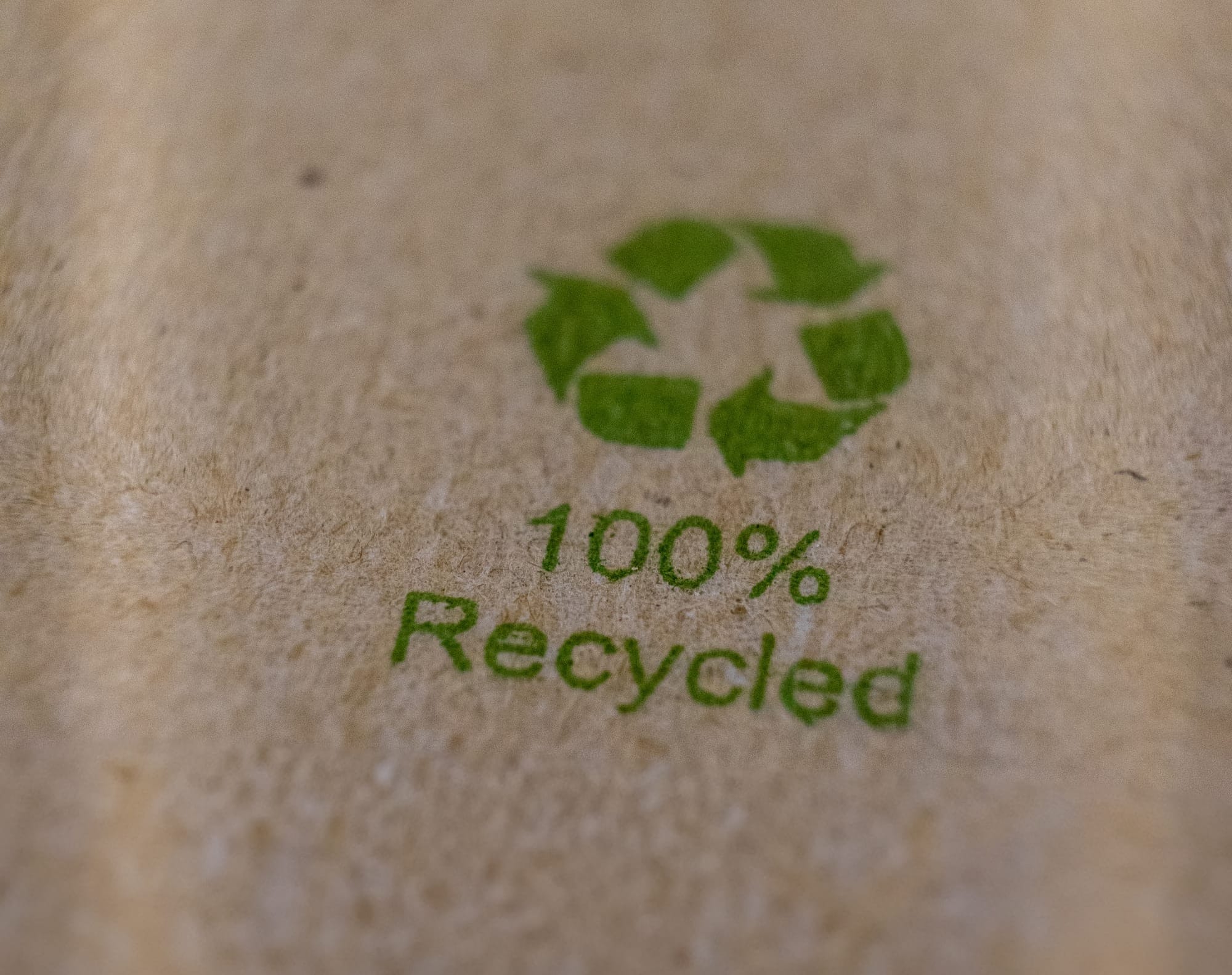Best Practices for Reducing Packaging Waste

Customers' demands and needs are changing rapidly. They no longer want to purchase a product just for its superficial benefits. Instead, they think beyond and want to reduce their carbon footprint.
Several companies have noticed this crucial aspect and are shifting to sustainable packaging. They use eco-friendly packaging materials throughout the product's life cycle, which helps reduce the cost of packaging design.
But is that the only benefit of using sustainable packaging?
No. It also shows how socially responsible your company is. Customers who notice this will eventually be more inclined to purchase from your company.
According to statistics, 40% of municipal waste is caused by packaging materials. Innovative packaging solutions that reduce waste are needed.
But the real question is, how can you contribute to packaging waste reduction? What are some methods to achieve it?
This blog will share some of the best practices for reducing packaging waste. So, let's get started.
What Is Packaging Waste?
Packaging waste refers to material used to safeguard, ship, or store products. In most cases, it is discarded after use. Packaging plays a major role in transportation and marketing products, so you can't skip packaging your product. But is there any way to ensure minimal packaging waste?
The first step in reducing waste is to implement sustainability. Anything can be transformed into packaging waste.
- Paper
- Glass
- Cardboard
- Wood
- Metal
However, plastic is the most common and abundantly available packaging waste material. Single-use plastics, or plastics in general, are not easy to recycle, so reusing them is not easy. It is already causing major problems worldwide.
The biggest issue is that packaging waste also leads to greenhouse gas emissions. Encouraging recycling can eliminate these issues and minimize harmful environmental impacts.
11 Methods to Reduce Packaging Waste

Now that you know what packaging waste is and the significance of implementing sustainable solutions, let's dive deeper and look at different methods of reducing it. All these play a critical role, from supply chain to transportation, packaging processes, and waste management systems.
That's why we will discuss all the possible solutions.
1. List All The Sustainable Materials
To optimize your packaging, start implementing sustainable solutions from the first step. Choose a packaging material that translates your product and aligns with the company's marketing goals.
There are several eco-friendly packaging materials. Some of them that you can implement are
- Glass
- Paper
- Bamboo
- Natural fibers
- Biodegradable plastics
These types of materials are easy to recycle or compost.
2. Check Packaging
Often, companies use extra materials on packaging.
What does that mean?
Avoid using cardboard, plastic wrapping, or sheets as a box buffer. Use other eco-friendly options to optimize your design. You should choose a material that's
- Recyclable
- Compostable
- Reduces the excess material used in packaging
Using sustainable materials should be the foundation of your business's manufacturing process. This allows you to redefine the design and make your brand known as eco-friendly.
3. Consolidate Shipments
Implementing one or two green packaging solutions will not help reduce packaging waste. During the supply chain, packaging waste increases greatly.
But why does that happen?
Often, packages are shipped with partially or individually filled pallets. Instead, it's ideal to consolidate your shipments. It minimizes the packaging needed for outgoing loads from the site and reduces the labor needed for packaging and shipment, reducing the chances of errors.
4. Identify Innovative Packing Techniques
Every packaging technique is unique and has specific advantages. The problem arises when companies prioritize speed over efficiency.
Speed >>> Efficiency
It's important to focus on speed because customers don't like waiting for their package to be delivered. But when it's unnecessarily rushed, management of packaging waste becomes difficult.
It's a critical area that requires deep examination and analysis. Look at all the packaging processes that can be improved. Here are a few that can be of great help.
- Minimalist & Mono-Material: Using a single recyclable material (e.g., corrugated cardboard) simplifies recycling and reduces waste. Minimalist designs are aesthetically appealing and sustainable.
- Minimal-Waste Wrapping Kits: Inspired by cloth wrapping, this reusable packaging is great for gift wrapping and promotes sustainable packaging alternatives.
- Smart Packaging: Integrated with QR codes or NFC technology, providing consumers with product details, AR experiences, or traceability to enhance engagement.
5. Check All Eco-Friendly Transportation Opportunities
No matter how much you focus on packaging, all environmental sustainability efforts will fail if transportation contributes to increasing carbon footprint. Since every transportation system differs, you need to evaluate the existing transportation strategy.
Here are a few questions you should ask.
- Is current transportation contributing to packaging waste?
- Is there any transportation through which you can reduce it?
- What's the estimated budget you'll need for this much-needed transition?
It will help you reach a conclusion and align your transportation strategy with sustainability goals. Make a list of transportation companies that follow sustainable practices. Now, you can choose the one that aligns with your business sustainability goals.
6. Don't Over-Package
You might have noticed that whenever you purchase a product, companies often add excessive packaging layers and buffers to protect it from external damage.
Let's imagine that you're buying a fragile item such as glass. It has a high chance of breaking, so there are many cushions or packaged layers such as bubble wrap or paper material as a caution. But this protection isn't needed for all items. Furthermore, it increases the amount of packaging waste.
What should you do in this case?
Examine the excess packaging in your product and eliminate some, if possible, to reduce waste. Here's what happens.
Reducing Over-packaging → Per-shipment Packaging Becomes Less → Less Packaging Material Utilized → Minimizes Packaging Expense & Shipping Costs.
7. Implement Just-in-Time Inventory
It's a unique inventory management system with which suppliers closely collaborate. Thus, businesses keep minimal inventory on hand and receive goods only as needed for production or sales.
However, precise forecasting and a strong relationship with the supplier play an instrumental role. Any miscommunication can lead to delivery delays and impact customer relationships.
Since you don't have excess stock, the approach helps in
- Minimizing waste
- Improving cash flow
- Reducing storage costs
8. Be Technologically Advanced By Using Automation
You can no longer rely on manual work alone. Automation should be used in the packaging process to reduce packaging waste. By automating systems, you can enhance
- Precision
- Speed
- Packaging consistency
- Less material waste
- Reduces human error
Streamlining workflows is the demand of the hour. It helps keep your business thriving and contributes to achieving high efficiency.
9. Conduct Waste Audits
Most companies ignore this step.
During this audit, you scrutinize your company's packaging processes, analyze the quality control of the packaging, and pinpoint areas where waste management methods can be implemented.
It's ideal to conduct waste audits regularly. You can identify errors and issues before they get out of control.
10. Recycle & Composting Programs
Implementing programs that promote sustainability and educate customers about how to do it is an incredible investment. You don't need to spend thousands of bucks planning and managing these programs. Instead, take small steps, such as designating specific recycling bins. It will reduce a lot of waste from going to landfills or contributing to packaging waste.
However, deep research and an understanding of your target audience and market are needed. Because all recycling programs are different, you need to research and analyze which program is ideal according to your needs and locations.
Improper waste management is a huge threat to natural materials. To reduce plastic waste, avoid manufacturing products from plastics, such as plastic bags or bottles. Instead, shift to reusable bottles and sustainable product packaging, some of the latest innovations in this area are as follows
- Mushroom packaging
- Compostable packaging
11. Focus On Supplier Participation
Encourage your suppliers to participate in activities and processes that reduce packaging waste. But who are your supply chain partners?
It includes your
- Buyers
- Suppliers
- Vendors within or outside the company
Collaborate with them and make them active contributors to waste management. It amplifies the results you gain from waste reduction in the supply chain and shows environmental responsibility. It increases the recycling rate and positively impacts the circular economy.

To Sum Up
Don't delay in reducing your company's packaging waste. Take the first step today. For this, you need to understand what steps you're currently taking for packaging processes. Get a clear idea of this, then list all the improvements you can implement. Now, finalize the best methods to reduce your company's packaging waste to an incredible extent.
But doing it alone can be difficult and frustrating. That's why Altro Labels is here to be your partner in sustainable packaging solutions. We help you determine the best sustainable packaging solutions for your business and provide you with a deep insight into elevating brand presence through your packaging.
We have already helped several businesses accomplish great results. Do you want to be next?
Then contact us today.
